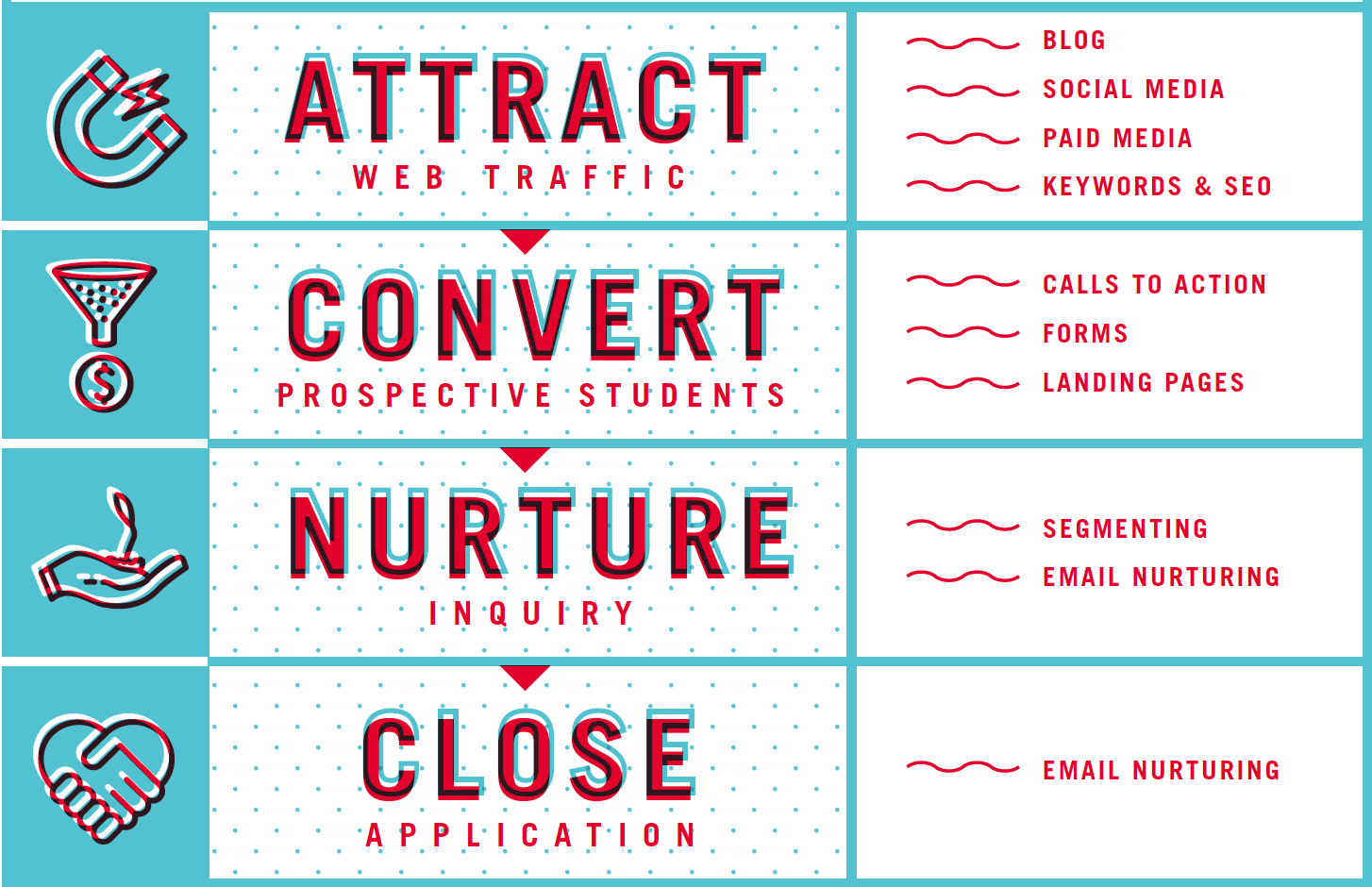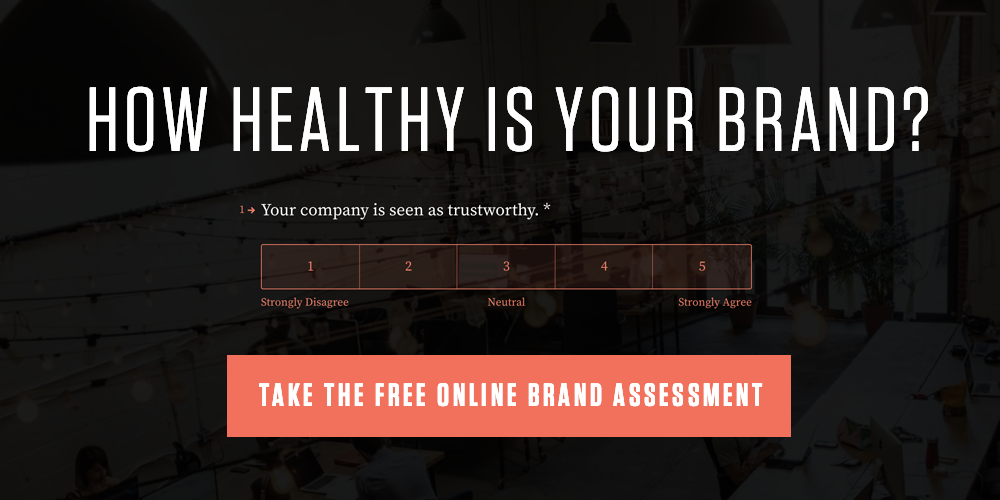
The journey. The funnel. They go hand in hand when talking about a new prospect. Let’s discuss how we take someone from being a complete stranger to becoming a customer, client, volunteer, donor, or student. We MUST be able to measure the success of what we’re doing from start to finish. Assumptions will be made at certain times, but it’s best to keep them to a minimum. Digital marketing allows us to see where the funnel is strong and where it’s weak. We do NOT want to lose momentum.
THE MARKETING FUNNEL
Let’s use a school as an example. Enrollment comprises 5 stages.
- Prospects are people visiting a school’s blog, website, or social media pages.
- Leads are prospects who have downloaded one of your resources or in some way provided you an email address, phone number, or liked your Facebook page.
- Inquiries are individuals that have reached out to some part of the school for a tour, sent an admissions question, or requested information. They're interested in your school, and they are getting closer to a decision.
- Applicants are those that have almost made it to the bottom of the funnel.
- The bottom is where the deal is closed.
DePaul University had a rate of return through to matriculation in 2014 of less than 1%. For a school that brings in 2,500 students with each enrollment class that means they start with 300,000 leads. The only way to find your funnel's weak points is to first look at the numbers.
IDENTIFYING & FIXING YOUR FUNNEL'S LEAKS
A healthy funnel is in large part about the numbers. Qualitative data is always important, but most goals will become apparent with the numbers. If you don’t have goals set up, there’s a problem. Most of you do, but there’s always ways to make them better. You should have goals for each part of the funnel. This will help you see where people are getting stuck.
#TOPOFTHEFUNNELPROBLEMS
In keeping with the theme of education, you can measure traffic to your website or blog. If you’re not generating traffic, then it’s all on the admissions team to squeeze a full enrollment out of a smaller than desired pool of prospects. You need to make sure you have a healthy website with content that is easy to find and digest. If your site visits are low, perhaps you need more content geared toward someone who is wondering about what school is like, or what to consider when choosing a school. Is the content geared towards your personas?
If you think the website and content are strong, it may be a distribution issue. Do you publish a blog post and hope people find it? Take a look at your social media and paid advertising programs to see where they can promote your top-of-the-funnel content better. Are you on the right social media channels? Are you posting the kind of information your personas want? Are you responding to people on those channels in a timely manner? Are you being helpful?
#MIDDLEOFTHEFUNNELPROBLEMS
There are 2 problems I’d like to go over at this stage:
1. Email addresses are not coming in. What’s up with that?!
Let's say you're getting good traffic, but nobody is downloading your premium, gated content. Not good: you're not collecting email addresses. If the perceived value of your content offer isn’t there, people won’t engage. They have to feel that they will walk away with some new knowledge that will make their lives or jobs better. Take a closer look at your gated content that's converting poorly to decide if the topic isn't right or your headline isn't doing it justice. You could also simply be asking for too much information at this stage. You can use progressive profiling to start by just asking for a name and email. Once you turn a prospect into a lead and get their email address in your database, you can gather more intel on them when they download future content.
2. 'One-and-Done' Downloaders.
If people are generally only downloading one or two pieces of your content and then disappearing, this drop-off will show up in the difference between the number of leads vs. inquiries. It may not be that the offer isn’t working. Maybe it’s just the fact that you haven’t offered them a clear call-to-action (CTA) or enough content to nudge them down the funnel. Do you have an email drip campaign with valuable curated content for that specific individual? Your nurture emails need the right CTAs that give them impetus and opportunity to make a proactive inquiry. Analyze all your CTAs in emails and reports that are intended to move the lead along, first to an inquiry then to an application. Which ones are working better than others? Learn from what works; discard what doesn't.
#BOTTOMOFTHEFUNNELPROBLEMS
Ok, you’ve made it this far. You have some people that have downloaded an application; don’t let those close numbers drop! Make sure there is a way to nurture those leads that have shown this much interest in your school. Use informative emails, posts, and other content that warms them up for admissions. Make sure you're passing along all the great intel you've gathered on the applicant to Admissions. Keep on ‘em! Marketing and admissions (or sales in the biz world) should be working together to understand how to close these applicants.
YOU'VE REACHED THE BOTTOM OF THIS FUNNEL
Digital marketing for schools is not much different than other industries. A strong flow of traffic should cascade down through each stage of the funnel to meet your enrollment goal. There will naturally be fall-off the farther down the funnel you get. That’s natural. Having huge drops in your numbers? Not so natural. Find those leaky spots in the funnel and get them fixed. It’s not just marketing’s job; it’ll take the whole team. Make sure everyone is on the same page, and you will see some good things happen.
–––––
How healthy is your brand? Take this free 20-question survey to find out.


